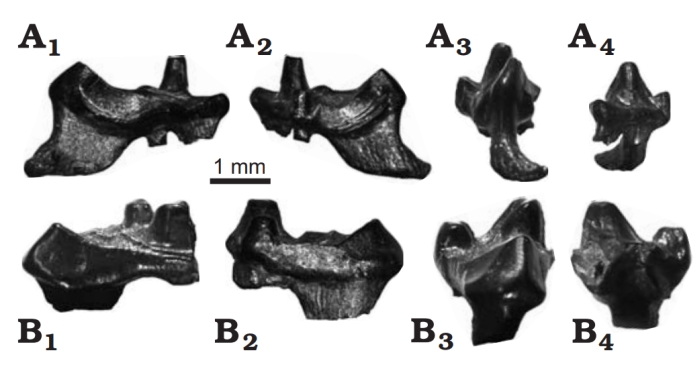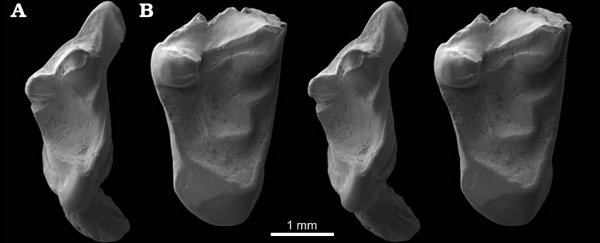Fossils of humanity's oldest known mammalian ancestors have been discovered on the coast of Dorset, UK - and they date back to the dawn of the Cretaceous period.
The 145 million-year-old teeth, found by an undergraduate student, belong to a pair of rat-like animals from the mammal group that led not just to humans, but to all modern placental mammals, from the tiny Etruscan shrew to the giant blue whale.
Grant Smith was sifting through Cretaceous rocks looking for something interesting for a dissertation project when he made the find.
"Quite unexpectedly he found not one but two quite remarkable teeth of a type never before seen from rocks of this age. I was asked to look at them and give an opinion and even at first glance my jaw dropped!" said Steve Sweetman of the University of Portsmouth, who identified the teeth.
"The teeth are of a type so highly evolved that I realised straight away I was looking at remains of Early Cretaceous mammals that more closely resembled those that lived during the latest Cretaceous - some 60 million years later in geological history."
The age of the teeth, 145 million years, makes them the oldest undisputed Eutheria, the group of placental mammals that went on to become the most successful mammal group on the planet.
Other surviving mammal groups are monotremes, which lay eggs, and marsupials, which gestate their young in a pouch rather than a womb.
The teeth, belonging to two distinct species, are of a type that can pierce, cut and crush food, which means that they are highly evolved for the Early Cretaceous time period. They are also well worn, suggesting they belonged to animals that lived to a good age.
The researchers named the animals Durlstotherium newmani, after Charlie Newman, a pub owner near where the fossils were found in Durlston Bay, and Durlstodon ensomi, after local palaeontologist Paul Ensom.
 (Martill et al., Acta Palaeontologica Polonica)
(Martill et al., Acta Palaeontologica Polonica)
Previously, a 160 million-year-old fossil from China, a shrew-like animal called Juramaia sinensis, was hailed as the oldest known Eutheria. But recent studies have thrown doubt on this conclusion.
A 2013 analysis that used large sets of phenomic and molecular data concluded, not without controversy, that Eutheria was younger than previously thought, just 91 million years old.
And a morphological study in 2015 excluded Juramaia from the Eutheria group.
It's worth noting that the world of palaeontology is full of such disputes. Another study, from 2011, for instance, found Eutheria could be 190 million years old, which would easily allow Juramaia into the group.
The only thing we can say for certain at this stage is that the newly discovered species are the oldest Eutherians found in Europe. It's entirely possible that Eutherians did have their origins in Asia, and made their way into Europe in the 15 million years between the dates of the two fossils.
Whether they're the oldest or second-oldest Eutherian fossils, the discovery of D. newmani and D. ensomi is still exciting, and can tell us something about how Eutheria evolved and spread throughout the world.
"The Jurassic Coast is always unveiling fresh secrets and I'd like to think that similar discoveries will continue to be made right on our doorstep," researcher Dave Martill said.
The research has been published in the journal Acta Palaeontologica Polonica.
